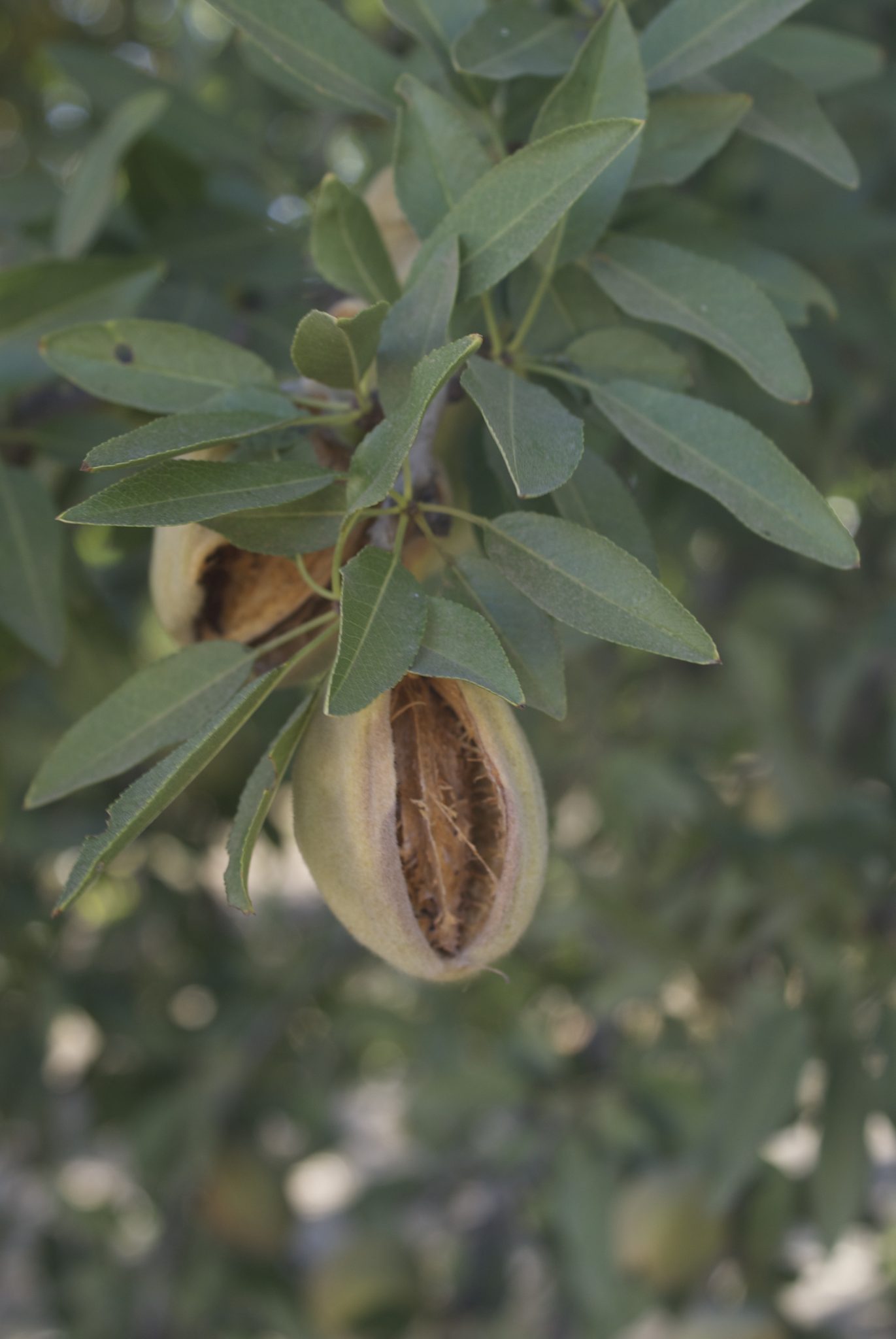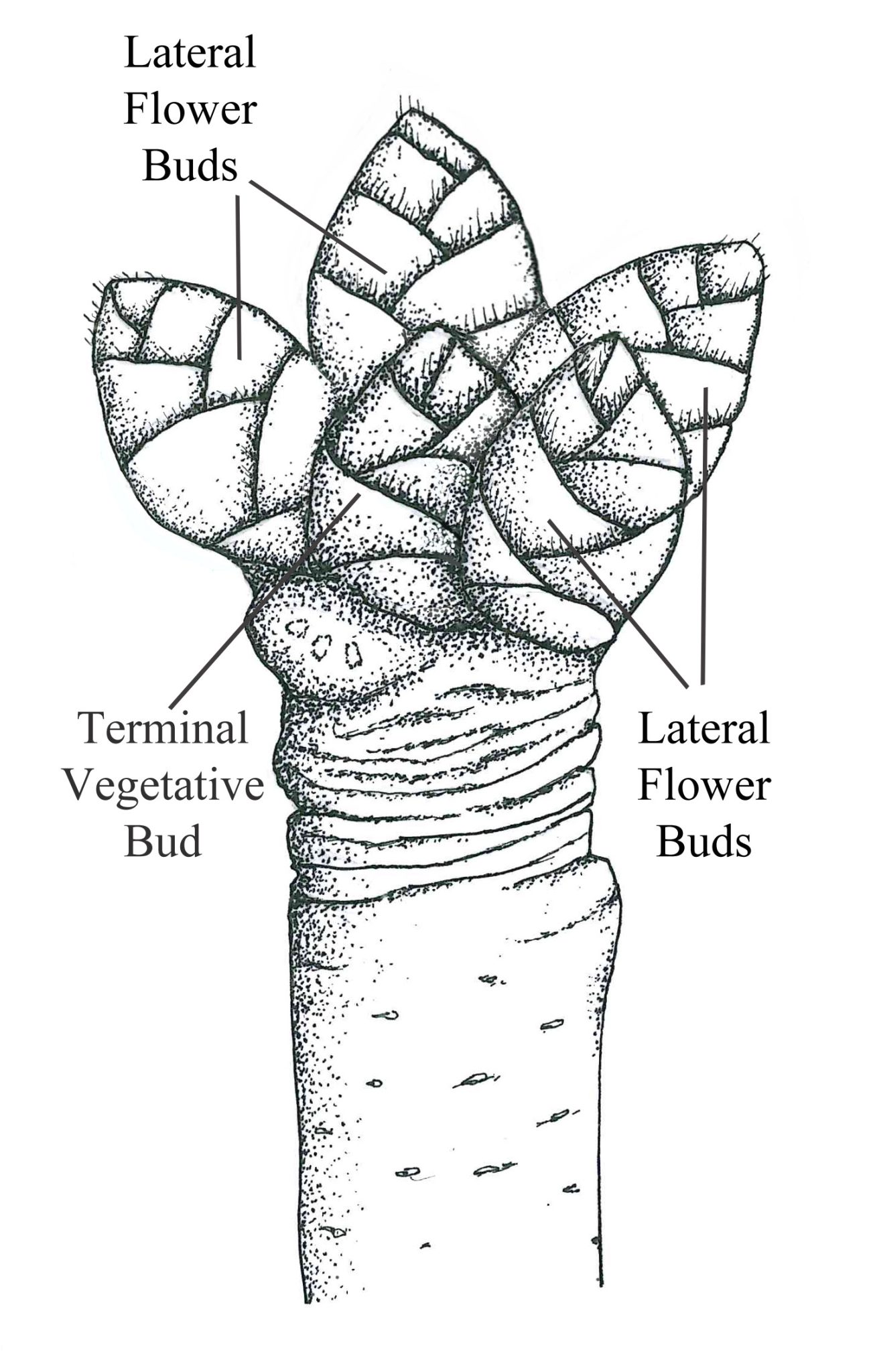
Maintaining a healthy spur population in an almond orchard will require careful irrigation timing and good tree health from hull split through September. While it may be a challenge for some growers to apply water in their orchards postharvest, that is one of the keys to a healthy spur population in the orchard.
Water stress postharvest affects spurs. the tree’s fruit producing structures, reducing bloom numbers and fruit set the following year. It also results in reduced carbohydrate development, meaning the tree will have less energy for flower development.
Sebastian Saa, Almond Board of California’s associate director of agricultural research, said keeping spurs healthy promotes a good balance between fruiting and non-fruiting spurs, ensuring good yields the following year. Trees can have recently formed spurs, spurs producing fruit and resting spurs after the previous year’s fruit production.
Adequate irrigation and fertigation early in the season promote development of new shoots and spurs on them.

From hull split through September, avoiding extreme water stress becomes even more important in almond production. During this time, the trees are undergoing flower-bud differentiation. This determines the number of spurs that will bear flowers and set fruit the next crop. Timing depends on temperatures and variety. In this process, which is initiated at hull split, there is a change in the bud that are on the spurs to form flower buds. To ensure a good bloom the next year, tree nutrition and irrigation are important. Saa said anything that negatively affects tree health during this time can have a negative effect on next year’s crop.
Loss of leaves reduces the trees’ ability to capture light, thus reducing photosynthetic capability. Trees with yellow leaves in early September due to extreme water stress or trees that have had premature defoliation due to excessive shaking won’t capture sufficient carbohydrates to have a strong fruit set next season. Similarly, Saa said mite infestations and hull rot can also negatively affect spur health.
High mite populations can cause early defoliation and interfere with photosynthesis, resulting in lower carbohydrate stores. Hull rot is less likely in a dry year, but overirrigation or excessive nitrogen applications can result in this fungal disease, which releases a toxin that kills spurs. Managing hull rot with good irrigation timing and not overapplying nitrogen, along with a good IPM approach to pests, can ensure spur health.
Elizabeth Fichtner, UCCE farm advisor in Tulare County, noted in San Joaquin Valley Trees and Vines that understanding the dynamic states of spurs between seasons and the conditions promoting spur productivity and survival may enhance orchard management practices to maintain or increase yields in future years.

Cecilia Parsons
Cecilia Parsons has spent the past 30 years covering agriculture in California for a variety of newspapers, magazines and organizations. During that time she has been fortunate to witness some of the important events that have shaped this diverse industry and worked hard to examine and explain these events for readers.
When Cecilia first moved to the San Joaquin Valley in 1976, her first journalism job was at a small daily newspaper where she covered “farm news.” From there she branched out to writing for a dairy magazine and a regional weekly agriculture publication.
Cecilia is part of a farming family from the rural community of Ducor where she also raises purebred sheep and is attempting to master versatility ranch horse riding.










